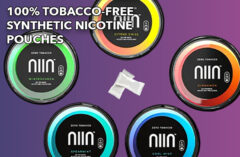Table of Contents
Last Updated on February 13, 2019 by Team Spinfuel
JUUL and Competitors – The vaping industry is probably the last place you’d expect the term ‘arms race’ to appear – but that’s exactly what Stanford researchers are calling the push for increased nicotine levels in vaping products. As JUUL continues to capture the attention of vaping enthusiasts in the U.S, competitors are keeping a close eye on the giant’s strategies.

Today, JUUL dominates the vaping market, accounting for roughly 70%+ of the $6.6 billion e-cigarette industry. According to Stanford professor Robert Jackler, this success has pushed other companies to emulate JUUL in a number of ways. This has led to a significant change in the vaping market.
In this post, we’ll take a closer look into how things have changed and how your favorite vaping brand may shape their products based on JUUL’s industry-changing strategies.
JUUL Increased Nicotine Levels
The e-cigarette is a fairly new product that hasn’t been around for long. As a result, the U.S vaping market is largely unregulated, allowing companies to drastically change the design of their products in order to increase sales. Before JUUL exploded in popularity, their vape juice contained between 1% and 2% nicotine.
Today, things are a bit different. Since its release in 2015, the standard for nicotine levels in JUUL’s vape juice sits at 5% (59mg), with some competitors reaching into the 7% range. Keep in mind that 5% nicotine is the equivalent to a pack of cigarettes.
Granted, this is still viewed as beneficial for nicotine-addicted adult smokers who need a safer way to ween off cigarettes, but it does pose a risk to addiction-prone teenagers.
Lowering Nicotine Levels
Facing the public’s backlash caused by teenagers using JUUL’s in huge numbers (teens even call vaping with a JUUL ‘JUULING’) and of course the overseas restrictions, the company released a lower nicotine solution in its pods (3% or 23mg) — but they still maintain a fairly potent punch.
JUUL developed a pod that has more vapor production, which can enhance the rate at which nicotine is absorbed in the body, even at the lower nicotine levels.
People knowledgeable about the development of the higher-vapor pod say the company hopes it will appeal to cigarette smokers who are accustomed to more vapor/smoke. And by reducing the nicotine level, even while increasing the effect of the nicotine, JUUL would be able to meet stricter nicotine limits in many countries.
JUUL Compatible Products
With competing brands trying everything they can to capitalize on JUUL’s success, the “JUUL Compatible” branding is making its way to more and more products – and JUUL doesn’t like it. As of August 2016, every vaping product has to receive approval from the FDA before it can hit the shelves.
According to JUUL spokesperson Victoria Davis, https://www.cnbc.com/2018/09/24/special-report-JUUL-copycats-flood-e-cig-market-despite-fda-rule.html there have been a number of products with the “JUUL Compatible” branding that have been released after August 2016. This means that these products were sold illegally as they contained issues that would prevent them from being cleared by the FDA.
The result is that JUUL’s image is taking a hit from competing brands and their unregulated products. This is why it’s important for vape users to shop wisely and ensure that their products are safe. Here you can find the online vape store with the highest quality products, helping you not only get some bang for your buck, but also stay safe in the process.
More Juice
Going back to the study done by Stanford researchers, they found 39 devices that are similar in design to those made by JUUL. These pre-filled pods contained more juice than JUUL’s, also advertising higher nicotine levels in the form of salt e-liquids, which we know are the standard form of nicotine in vapes due to it being easier to inhale.
So, what can we learn from all of this? Even though vapes are relatively safe to use, we should always exercise caution when trying out new products, especially with unfamiliar brands.








